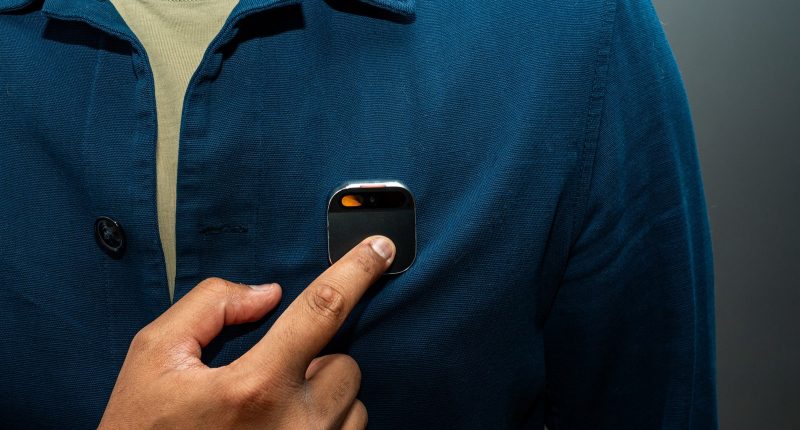.jpg)
“This is what I messaged you about!”
That was my mom’s reaction when she saw me wearing the Humane Ai Pin. This new artificial-intelligence-enabled wearable lets you access the power of AI models such as OpenAI’s ChatGPT 4.0 and Google’s Gemini, plus a mix of others, wherever you are with a simple tap of the finger. My mom learned about it by watching her routine Indian news—a testament to the far-reaching buzz that Humane’s first product has generated.
She naturally wanted to see it in action, and I was happy to oblige. She was cooking in the kitchen, so I tapped on the Ai Pin and said, “Look and tell me what this is.” It took a glance at what was in front of me using its onboard camera, then told me I was staring at lettuce. (Correct!) My mom asked me to peel a cucumber, so I tapped the device to wake it up, then asked, “Do you need to peel a cucumber?” The Pin said it’s unnecessary unless the skin has been waxed or you plan to cook with it. My mom said she was making fish molee, so I asked the Pin what it was and, to our surprise, it understood and answered:
This went on for a bit, but I increasingly began to doubt the accuracy of the information the Humane wearable was providing. My mom told me to avoid high-fructose corn syrup right as my dad handed me a bottle of Malta Goya—she said the sweetener in it was banned in California. The Ai Pin agreed with this when I asked it. However, California did not ban it; the state banned four food additives last year, none of which are high-fructose corn syrup.
On my parents’ TV screen, an image of a temple popped up on the Chromecast’s screensaver. My dad asked where it was, so I positioned my Ai Pin toward the screen and said, “Look and tell me where this picture is from.” The answer? Angkor Wat in Cambodia. I didn’t have a specific reason to doubt this, but because the Pin doesn’t have a proper screen, there’s no way to verify it. I launched Google Lens on my phone, pointed the camera at the screen, and … well, the temple is the Phraya Nakhon Cave in Thailand. The images in the Google search matched perfectly with the screensaver.
Not being able to fully trust the results from the Ai Pin’s Ai Mic and Vision features (the latter is still in beta) is just one problem with this wearable computer. Unfortunately, there’s not much else to do with it as it’s missing a great many features. The Humane Ai Pin could be an interesting gadget a year from now after promised software updates, but at the moment it’s a party trick.
Put a Pin in It
After you buy a Humane Ai Pin, you’ll need to set up a Humane account and passcode. This way, once you receive your device, everything is ready to go; just enter your passcode. It’s seamless.






